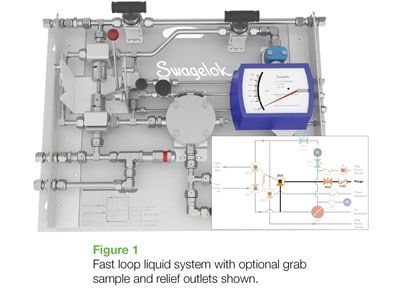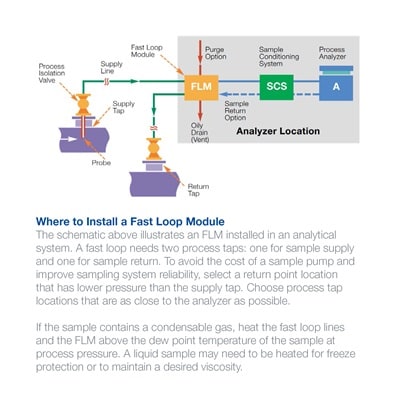Gas Chromatograph Installation: Understanding the Sample System Design Basis

Understanding the Sample System Design Basis
Say for instance an EPC is contracted for a refinery upgrade for a new hydrotreater, which includes the installation of a brand new gas chromatograph (GC) in the upstream crude unit, designed for simulated distillation set up to measure end point temperature. Part of this new project calls for the sampling of four separate liquid streams, with sample tap locations that require exceedingly long sample lines (200-500 feet) to the projected analyzer shelter location.

Complicating matters is a design basis calling for a one-minute fast loop transport from sample tap to shelter. On the surface, this would appear to be a sensible request; you certainly do not want to be taking yesterday’s sample. Timeliness of a sample system response is always of paramount consideration.
As we often see, however, the process engineering component to analyzer sampling is critical, and warrants a view into the wider picture of plant operations. Considering the intended purpose of the analyzer, how critical is the one-minute transport time?
Where did one minute come from? Will these results directly inform a control algorithm making process changes by the minute, or factor into wider blending considerations done manually on more of a daily basis? What if we challenge the design basis and find a more prudent approach that ultimately meets the project objectives without over-engineering a sample system?
Scoping out various options for techno-commercial analysis – the same practice fully required for the new hydrotreater unit, for instance – is well warranted for new analyzer configurations. Moreover, these analyzer studies warrant the attention of both a process engineer and analyzer/I&C engineer.

The parent process unit is heavily simulated and engineered from a process engineering standpoint. There are well-defined specs on product requirements that are to be achieved across a range of potential feedstocks. The sampling process is a miniature version of this, designed to achieve a certain temperature and pressure (almost always different than at the sample location) at the analyzer within a desired and useful amount of time. Unlike the parent process unit, the sampling system is often not nearly as thoroughly engineered, resulting in ill-conceived and imprudent analyzer installations, consuming operations man-hours and at times even wasting capital.
Understanding how the big picture relates to an analyzer’s ultimate purpose can be key to its successful installation. Using that knowledge to inform an appropriate design basis for the sample system is one of the most important first steps to ensuring that purpose is met.
